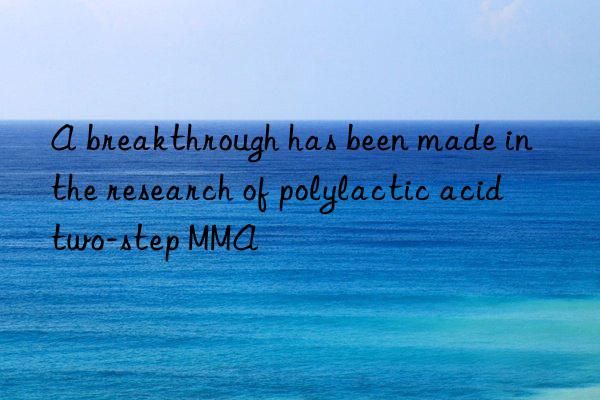
Recently, news came out from Peking University that the research group of Professor Martin and Associate Researcher Wang Meng from the School of Chemistry and Molecular Engineering of the school adopted the transformation idea of "carbon cycle" to convert polylactic acid into Methyl methacrylate (MMA). This method is expected to solve the problem of high-value reuse of waste biodegradable plastics.
The use of biodegradable plastics, including polylactic acid, is a viable solution to plastic pollution. However, waste PLA degrades very slowly in the actual environment and is eventually released in the form of carbon dioxide, resulting in a waste of carbon resources. Therefore, converting such waste biodegradable plastics into high value-added chemicals is an important way to realize the recycling of carbon resources.
According to Martin, the research team used a cubic phase molybdenum carbide catalyst and methanol in the first step of the reaction. Under the reaction conditions of 220°C without external hydrogen, the efficient preparation of propionic acid from polylactic acid waste plastics was achieved through alcoholysis and hydrodeoxygenation. Methyl ester, the yield of methyl propionate reaches 98%. Subsequently, they further used the cesium-lanthanum/silica composite catalyst to realize the efficient conversion of methyl propionate and formaldehyde to methyl methacrylate. At 380°C, the conversion rate of methyl propionate exceeded 80%. Methyl acrylate selectivity exceeds 90%.
In addition, the research team evaluated the efficiency of the two-step conversion of PLA to methyl methacrylate using commercial PLA straws. Studies have shown that 2.5 grams of methyl methacrylate and 2.1 grams of methyl propionate can be obtained from 6 grams of polylactic acid straws through two-step catalytic conversion. It is worth noting that there is no need to add hydrogen during the whole reaction process, which reduces energy consumption.
Martin said that the conversion of waste biodegradable plastics into high value-added chemicals should follow three guidelines: first, the conversion should be carried out under relatively mild reaction conditions; second, the oxygen-containing groups in polyester plastics They are all difficultly introduced during the monomer synthesis process, and the oxygen-containing groups in the carbon skeleton of polyester plastics should be retained as much as possible during the conversion process; the third is to use as little hydrogen as possible, especially high-pressure hydrogen. The last two criteria are interrelated because the removal of oxygen-containing groups generally requires the participation of hydrogen. Satisfying these three criteria is of great significance to the green and sustainable transformation process of polyester plastic molecules.
Martin said that in the next step, the research team will continue to develop more waste plastic conversion routes, and at the same time study the impact of additives contained in waste plastics on the conversion process. In addition, the research team should strengthen cooperation with enterprises to promote the commercialization of promising transformation routes as soon as possible.



 微信扫一扫打赏
微信扫一扫打赏
